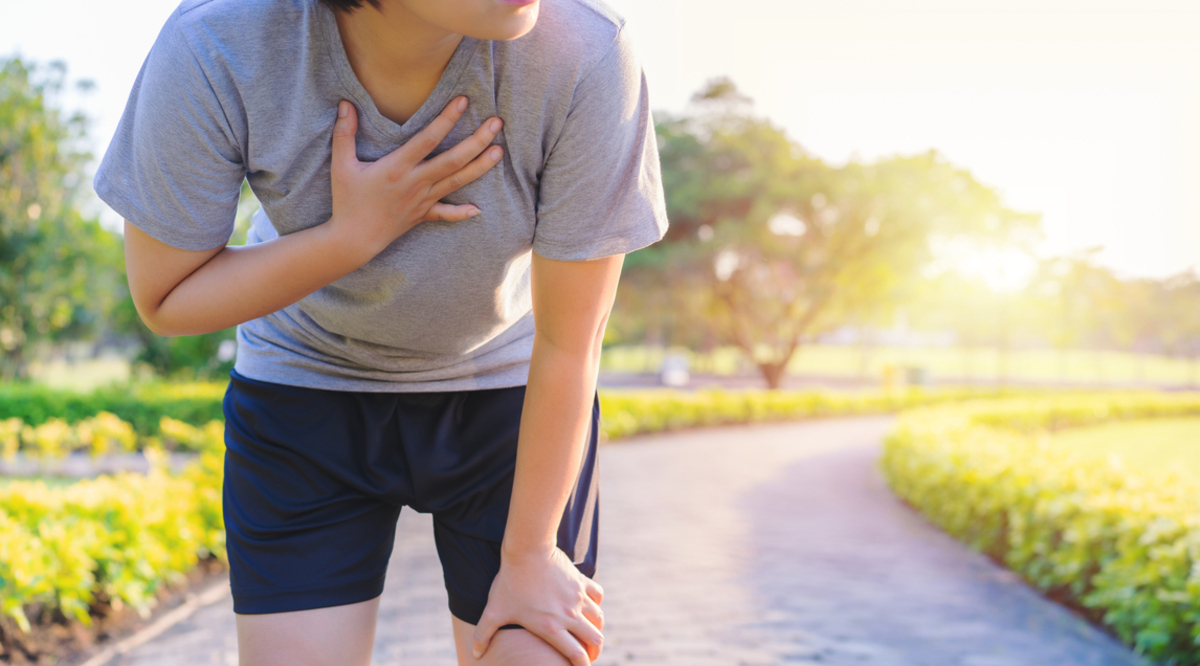Dyspnea is another term for shortness of breath, which is one of the symptoms of coronary artery disease. Aside from the actual medical condition that lies behind it, shortness of breath can be a very scary symptom, causing people to panic because they are not able to breathe properly. Thankfully, there are a series of ways to deal with these stressful episodes.

1. Diaphragmatic breathing
To practice diaphragmatic breathing, you have to sit on a chair with your knees bent and the soles of your feet touching the floor. Relax your head, your neck, and your shoulders, and place your left hand on your abdomen. Breathe through your nose and feel your belly moving with your left hand. Tighten your muscles as you exhale, focusing on exhaling more than inhaling. Exhale for longer than you inhale, and repeat the process for five minutes.
2. Pursed-lip breathing
This is the easiest method to try and restore normality to your breathing patterns. It helps you get back on the right trap through deep breaths, and by releasing air that may be trapped inside your lungs. For this coping exercise, you have to relax the muscles in your shoulders and neck. Keep your mouth closed, and breathe through your nose for two counts. Then, purse your lips (as if you wanted to whistle), then exhale through the mouth while mentally counting to four.
3. Sitting forward
This position has two different approaches, both of them suitable for people with dyspnea.
- You can sit on a chair and lean your chest forward at about a 30-degree angle. The soles of your feet have to touch the floor. Put your elbows on your knees and hold the chin in the palms of your hands. This position helps the body relax and eases breathing.
- You can also sit on a chair in front of a table, this position being slightly more comfortable than the previous one. Adopt the same position as before, only this time you can rest your arms on the table. Put a pillow on the table and rest your head on it. This sitting position will relax you enough to help you catch your breath.
4. Standing
There are a few standing positions that can aid you in catching your breath if you’re having difficulty breathing.
- Lean your body against a wall and stand facing away from it. Place your hands on your thighs and keep them in a relaxed position. Relax your shoulders, then lean forward a little, dangling your arms in front of you.
- You can also use a table for arm support. Stand in front of it, and place your palms on a flat surface, making sure that your neck is relaxed in the meantime. Lean your head on your forearms, and keep your shoulders relaxed.
5. Sleeping
Some people experience dyspnea when they’re sleeping, and it often wakes them up because they feel like they’re suffocating. Frequent waking decreases sleep quality, so it’s important to adopt a sleeping position that prevents that from happening.
- A good sleeping position would be on the side, with a pillow between your legs. Your head should be elevated by a pillow, but the back needs to be straight so that you can keep your spine aligned and prevent waking up with pain.
- Another option is to sleep on the back, with your head elevated by pillows. Also, place a pillow at the back of your knees, so they can be slightly bent. These positions will keep your airways relaxed and can prevent obstructions that lead to dyspnea episodes.
6. CPAP machines
Those of you who are experiencing frequent sleep interruptions because of shortness of breath at night should talk to your doctors about the possibility of using a CPAP machine. These medical devices are prescription-only.
However, this isn’t a device designed to be used throughout the entire day, so it’s only prescribed to people who have sleep apnea and require this for treatment.
7. Medication
In some cases, doctors can choose to prescribe medication to people who have constant shortness of breath. Such meds include oxycodone, fentanyl, or morphine. Opioids can relax the body up to a point where breathing feels more easy and natural, but there are no studies to show they can increase bloodstream oxygen levels.
Despite the fact that opioids are a common treatment in people who suffer from cancer, as they have been adjusted to ethical and safe use, doctors are reluctant to prescribe them to people who have shortness of breath because of the concern that they might cause addiction.
8. Emotional support
Shortness of breath can also be caused by a series of psychological factors. The fact that relaxation exercises to clear the airways are efficient is more than enough evidence to support this claim. Currently, researchers are studying the effects of relaxation therapies on dyspnea through methods that include music therapy, acupuncture, meditation, or structured exercise.
Because shortness of breath causes panic, people will do just about anything to avoid it and could end up missing on opportunities because of their anxiety. Getting emotional support from the people around is very important because anxiety combined with the sense of loneliness is a terrible threat to one’s mental health.
Conclusion
- Photo courtesy of SteadyHealth


Your thoughts on this